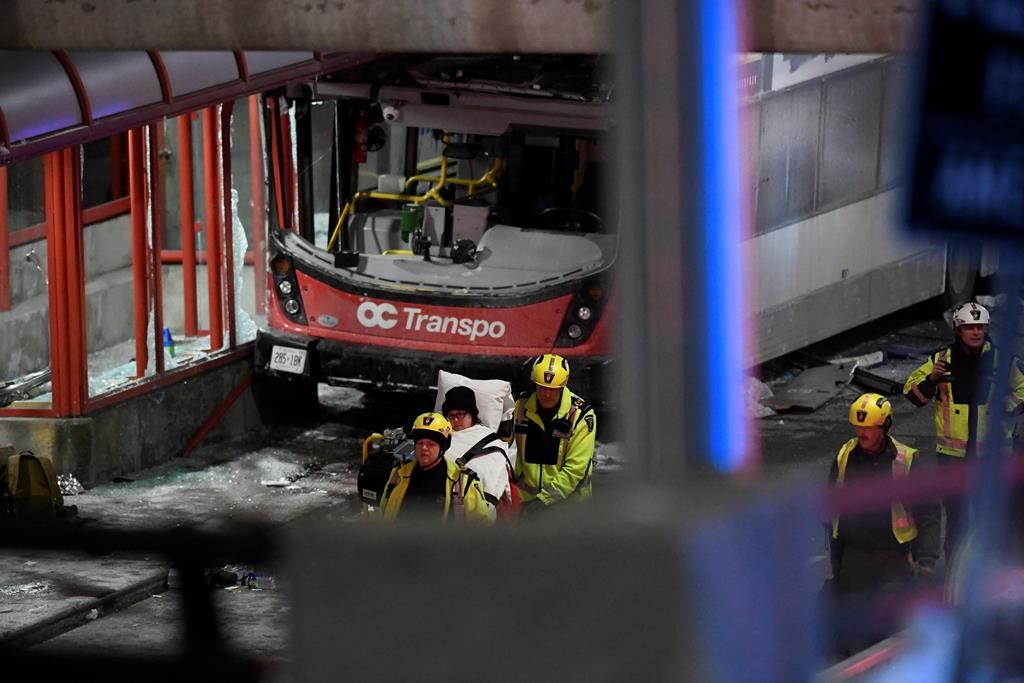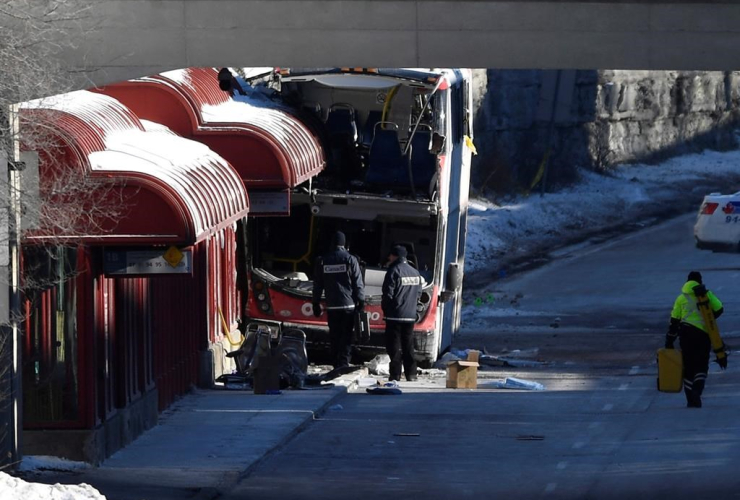Dr. Manoj Lalu was in the middle of a routine, elective surgery at the Ottawa Hospital Friday evening when the hospital suddenly declared a Code Orange, invoking a protocol for dealing with a large-scale disaster.
An OC Transpo bus had hopped a curb and struck a transit shelter, whose roof cut deep into the vehicle's upper level and crushed a number of seats. Three people were killed and 23 others were injured.
As the co-ordinating anesthesiologist for the emergency department, Manoj knew his place was in the ER. He quickly got a colleague to take over his surgery and made his way to the emergency room.
Other medical staff also sprang into action to make space in the department, which was already holding about 100 patients. They did not know how many patients would come or how badly they would be hurt.
By the time the first patient arrived, eight full trauma teams had been assembled — a feat many medical staff described as remarkable.
Nonetheless, it was not a scene for the faint of heart.
"There were some very serious limb injuries that were life-threatening," said Dr. Mike Rubin, an emergency physician working in the ER that night.
"These are people who were on their way home from work, no idea that this was going to happen. They were minding their own business, enjoying a ride home, and there was huge devastation in a lot of these patients, huge battles ahead of them for their life and also to regain their functions. It's terrible to see and it's awful to see the suffering."
Dr. Jacinthe Lampon, the trauma medical director for the Ottawa Hospital, likened the scene to her time serving as in Kandahar, Afghanistan, where soldiers attacked by improvised explosive devices also often needed medical treatment for limb injuries.
"It brought a lot of memories back from that time, because it was a similar situation in the sense of many, many patients coming in a short period of time," Lampon said.
Ottawa Hospital is the trauma centre for the surrounding region, and as such took primary responsibility for those most badly injured in Friday's crash.
All physicians who shared their perspectives on what happened that night described the ER as "busy" but orderly, with many patients coming in with tourniquets thanks to the efforts of emergency responders who tended to them at the accident site.
Rubin credits these temporary measures as life-saving.
"In this type of incident, where most of the injuries were extremities, this sort of pathology can easily transform into life-threatening issues if you don't stop the bleeding, because losing a limb or having a large injury to one of your limbs where you're bleeding out, eventually the tank is going to empty and you go into shock," Rubin said.
"Had they not have used tourniquets ... I think you would have had far more mortality."
A number of temporary surgeries were performed Friday night and into the early hours of the morning, as doctors stabilized the survivors. Several amputations were needed. Many patients will have further surgeries, physiotherapy and other follow-up care.
The care demanded a lot of hospital staff, many of whom stayed late after a long day in the ER or turned around and came back in after having left already.
But the facility was especially well-equipped to deal with the tragedy thanks to a hospital-wide mock disaster exercise held just two months ago, said Dr. Andrew Willmore, medical director for emergency management.
He believes the mock Code Orange in November helped ensure all patients who arrived alive on Friday survived.
Willmore leads the team that helped design the Code Orange protocols but he was out of town for an academic conference when the bus crashed. The training ensured his absence did not hinder the hospital's ability to manage the real-life disaster, he said.
"Everybody knew their role and what they needed to do, and at the end of the day that's really by design," Willmore said.
Despite their professional attitude toward the event, many doctors working in the ER that night say it affected them personally, once they had time to sit back and reflect on the experience.
Witnessing patients realizing they had lost limbs after shock had set in was especially difficult, Rubin said, stressing how much every physician feels for injured patients.
"Probably many of these patients don't yet understand the scope of what they've been through or understand that, when you look down and you don't see your leg, that hasn't hit home yet," he said. "Seeing the devastation and seeing them suffering was awful."




Comments